- Honda Worldwide Home
- Motor Sports
- EWC
- The History of Invincible Honda
- 1976
Honda Endurance Racing and F.C.C. TSR Honda are participating in the 2016/2017 FIM Endurance World Championship (EWC) series with Honda CBR1000RR bikes. The series stages a total of 6 races, ending with the Suzuka 8hours FIM EWC. The European Endurance Championship series is the predecessor to the FIM EWC series. In the 1970’s, Honda won both the riders and the constructors titles for four consecutive years. The team was so strong, it was known as “the invincible.”

1976 Zandvoort 600km
With the experience gained from two non-title races, the team did their best to improve the RCB's performance and reliability, in preparation for the first round of the European Endurance Championship, the Mugello 1000km, in Italy. At this technical 5.245km track laid out on a hilly landscape, the lightweight yet powerful 860cc Ducatis were the favorites. Ducati led with the race with four Hondas chasing, but gradually 3 of the 4 RCBs retired due to crashes, cam-gear problems, and fuel tank issues. 41 minutes after the start, RCB (Honda France Leon/Chemarin) took the lead from the Ducati, and after fending off the Ducati in fierce battles, won by a mere 1 minute 39 seconds.
By this time, a new issue had arisen. As the machine’s engine power and displacement were increased, heat produced by the engine increased as well. This heat was enough to damage the engine, and the rider. The team re-designed the cowling to deal with this intense heat, but improvements were marginal. The RCB team were back on the track for the fourth time, at Round 2 of the European Endurance Championship, the Montjuic 24 hours in Spain. This race would be Honda's first 24 hour race. The team improved the machine in major areas such as engine, frame, electrics and other parts in the one-month interval.
Summer in Europe that year was intense, with little rainfall. Even the coolest early mornings had temperatures above 22 degrees Celsius in Barcelona, where the race was going to be held. Under these conditions, Honda decided to race without the cowling to keep the engine cool, and the riders would benefit from the airflow to endure 24 hours on the track. At 8 pm under the last glimmers of Barcelona sunlight, the race started with thundering exhaust sounds. Although Woods/Williams of Honda Britain had a bad start due to engine issues, the three Honda France teams fared better, and by Lap 4, they were 1st, 2nd, and 3rd. One hour into the race, Christian Huguet crashed, and gradually the other teams also lost ground due to mechanical problems, while the Honda Britain team slowly made a comeback. After 2 hours, Honda Britain was leading the race. Later on, except for Hubert Rigal/Rene Guili, the French Honda teams had overcome their problems and started to stage their revivals. At the 7-hour mark, the Leon/Chemarin pair had made it back to second place, and the two RCB1000s led the race to the very end, finishing with a new record of 747 laps (2831.13km). With the other RCB1000 gaining position to 4th, Honda finished the race in 1st, 2nd, and 4th.
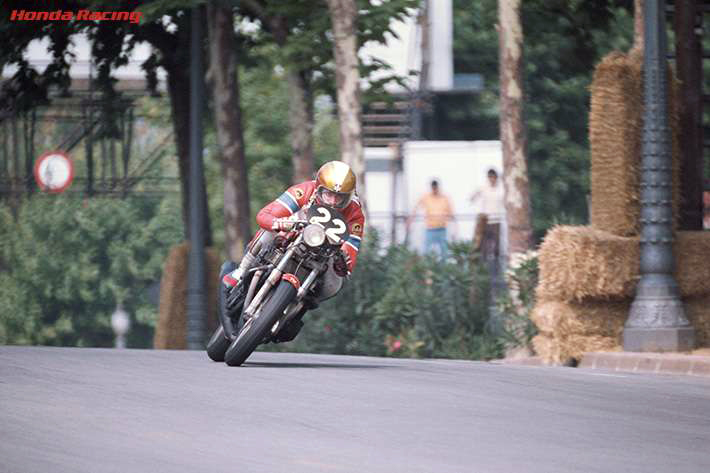
Jean-Claude Chemarin (1976 Montjuic 24hours)
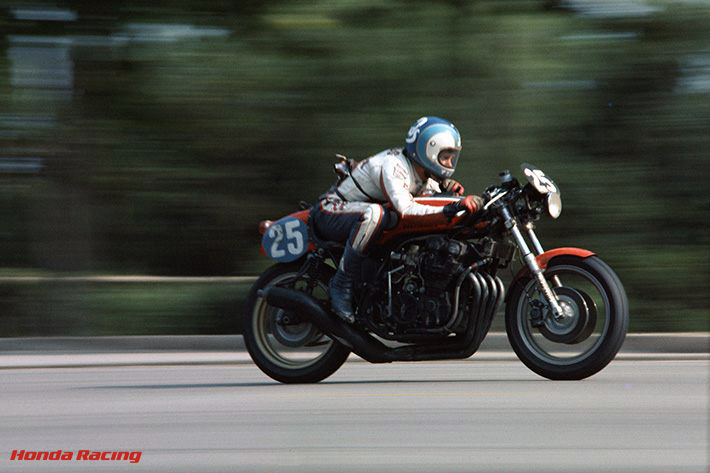
Stan Woods (1976 Montjuic 24hours)
Honda’s fifth endurance challenge was Round 3 of the European Endurance Championship, the Liege 24 hours, in Spa-Francorchamps in Belgium, on August 14-15. The long 14.120km course weaved through the hills, where bikes would reach maximum speeds of 270km/h. Engine power was vital to be competitive at Spa. The new RCB1000s (480A) had been enhanced to 120PS/9000rpm, with a 997.5cc engine. Twin headlights were mounted as Spa at night was pitch black, except for the pit road. The race started at 4 pm. Leon on the Honda France RCB led the race, and by the time the first hour ended, three Hondas out of four were in the top 4, in 1st, 2nd, and 4th. After nightfall, the RCB1000s continued to maintain their lap times while rivals pushing hard to keep up with Leon/Chemarin in front, gradually fell back, unable to maintain the pace. It looked as if the race was Honda's.
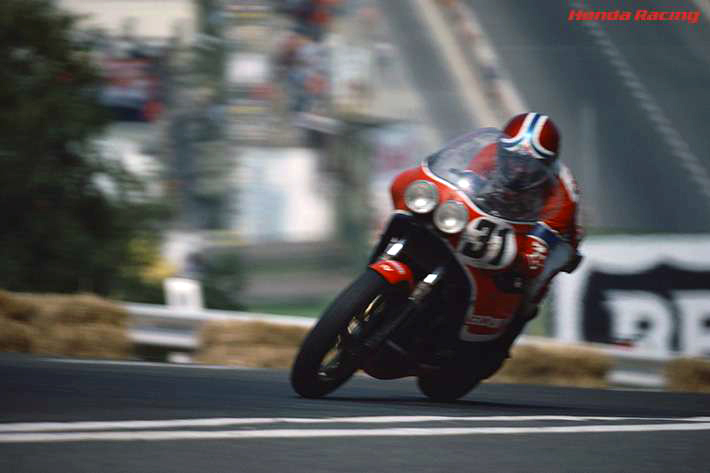
Christain Leon (1976 Liege 24Hours)
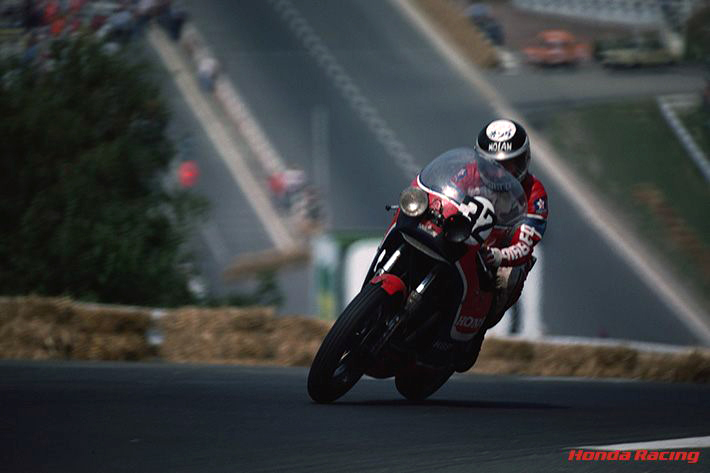
Christain Huguet (1976 Liege 24Hours)
Racing, however, is never so easy. Rigal/Guili started to suffer from a mechanical issues just before dawn, and at 8 am, Woods/Williams in third place also had problems. Both pairs had to retire. Although powerful enough to outrun its rivals, the new RCB had serious issues with heat causing various mechanical problems. Brutally increased oil consumption also became an issue. The engine was using almost twice the amount oil as the previous model, and this was another cause for more problems. Having to cope was difficult for the Honda teams, but nonetheless, Leon/Chemarin led and won Spa with an astonishing new record of 315 laps (4447.8km).
Huguet/Roger Ruiz had trouble with engine lubrication, but managed secure second place in the 19th hour, and held the position to the finish. A French Honda dealer, Japauto, finished 3rd, and in 4th place was a local Belgium team, Dholda. 5th and 6th places went to Honda privateers, so this meant Honda had a clean sweep of 1st to 6th places. With this victory, Honda had secured the European Endurance Championship’s manufacturers title. With one month to go, the long-planned fifth round, Bol d'or 24 hours, was in their sights. This was the race that the team wanted to win the most, as it was the prime motivation of establishing HERT.
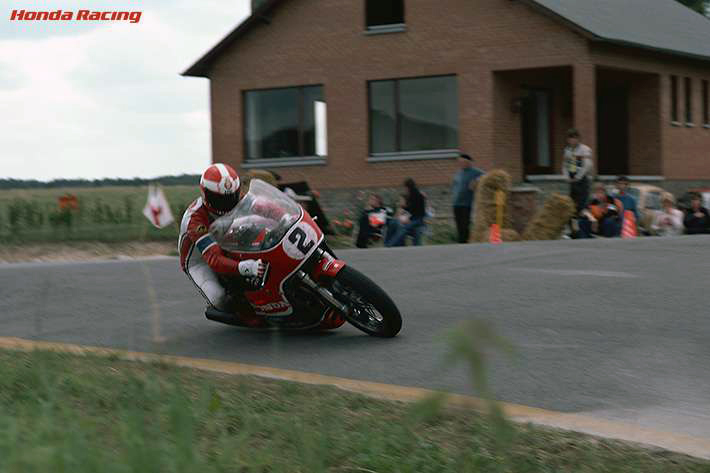
Hubert Rigal (1976 Metit 1000km)

Rene Guili (1976 Metit 1000km)
Before the big race in Bol d'or, the team raced the non-title Metit 1000km in Belgium. Honda's top riders Leon and Williams had suffered from injuries and could not race in qualifying, but the RCB1000s still dominated the front row. During the race, the four RCB1000s competed for the top group. In the closing stages, Chemarin/De Bloc (Leon's substitute) had retired, while Huguet pitted on the last lap while in 3rd place, giving the victory to Rigal/Guili. Woods/Tony Rutter (Williams' replacement) came in second and Huguet, slipped back to 4th place as he pushed his machine over the finish line as the crowd applauded. This race was the first time the team equipped the RCBs with a new type of wheel assembly, the “Comster.”

